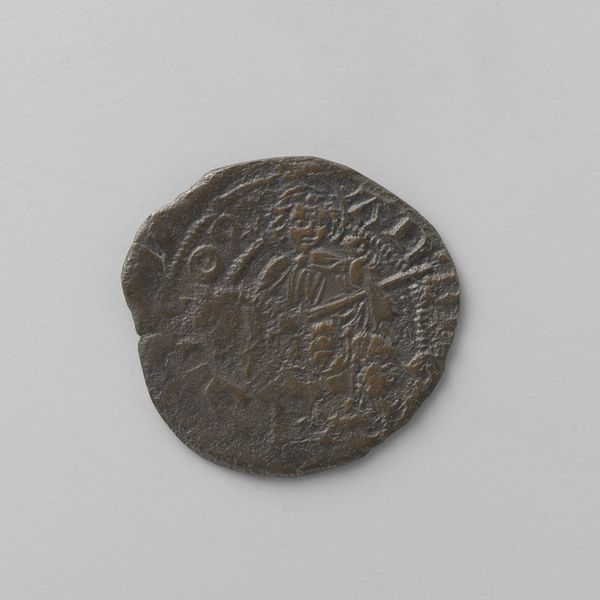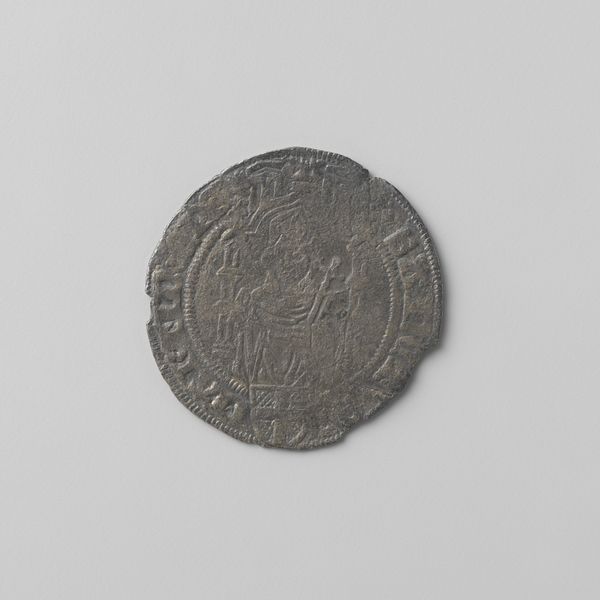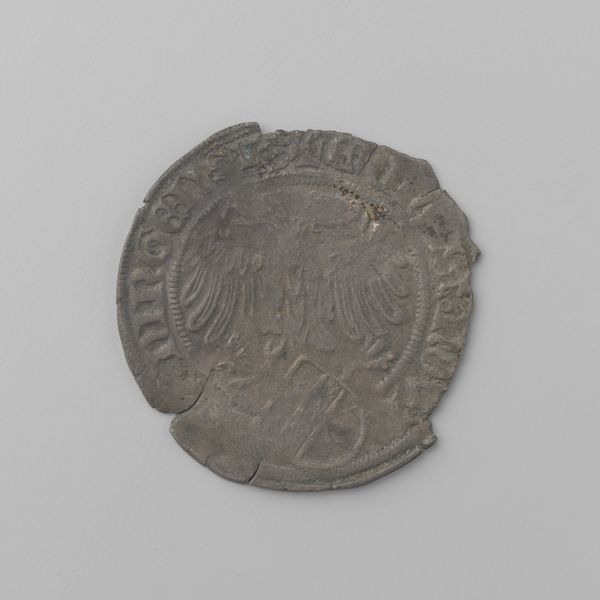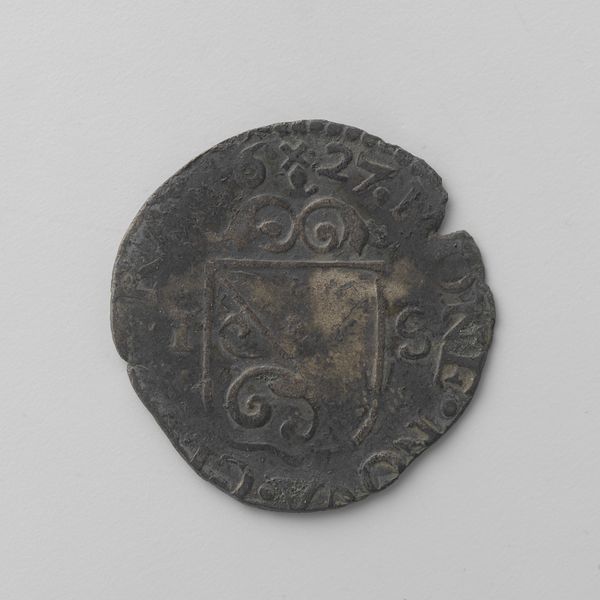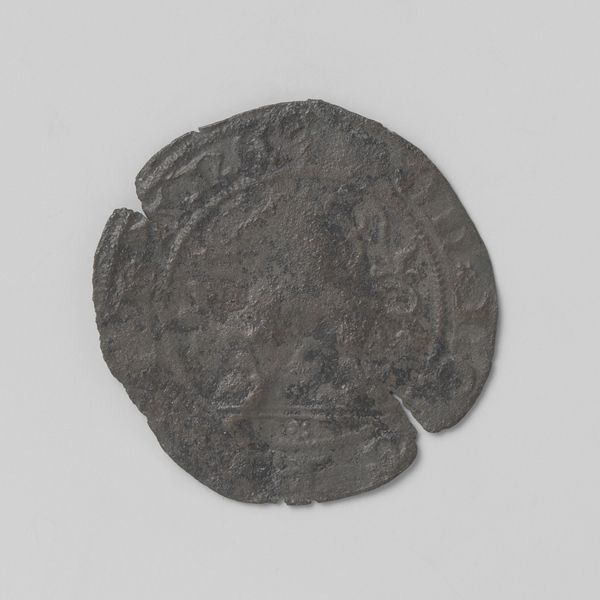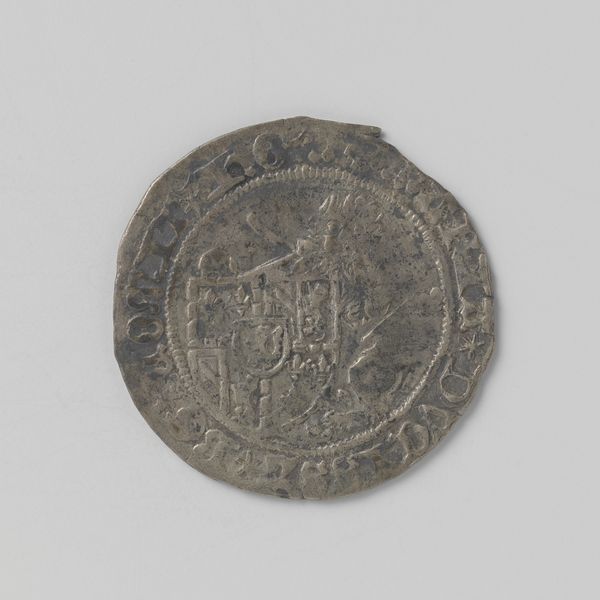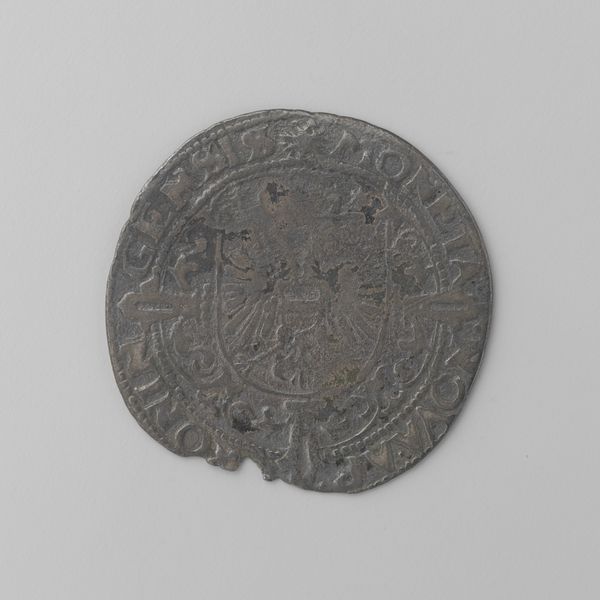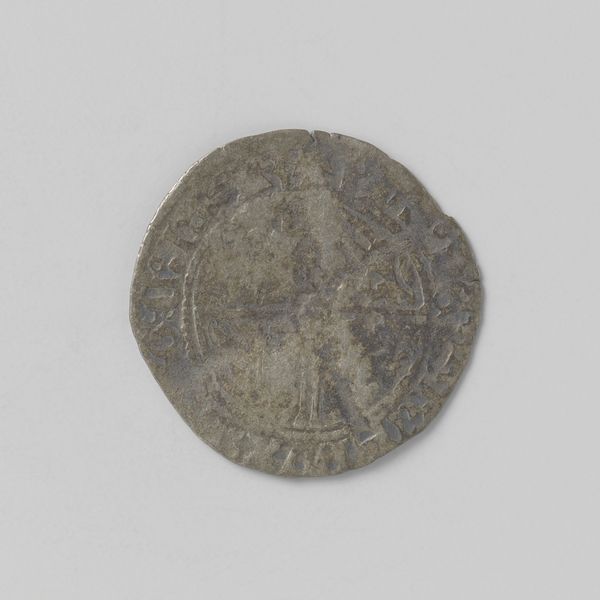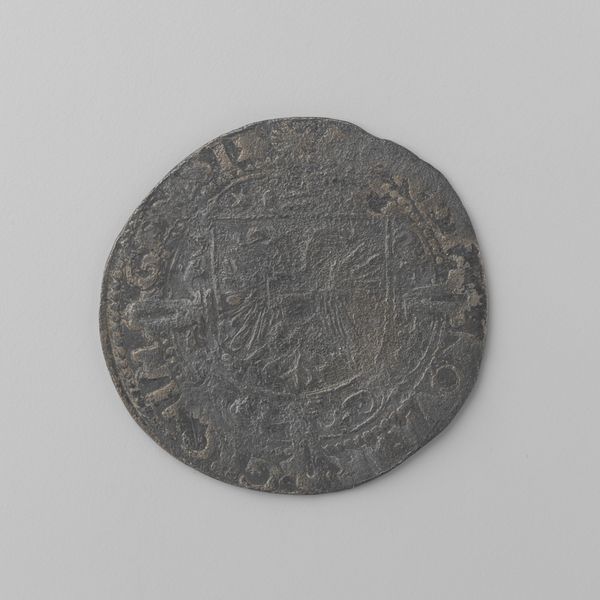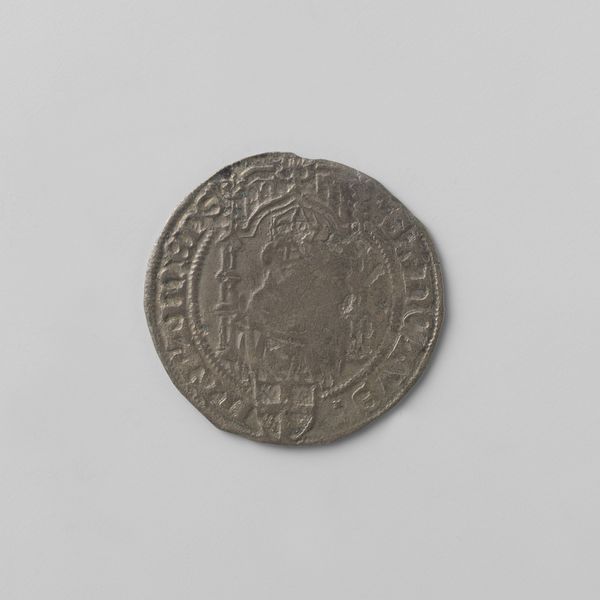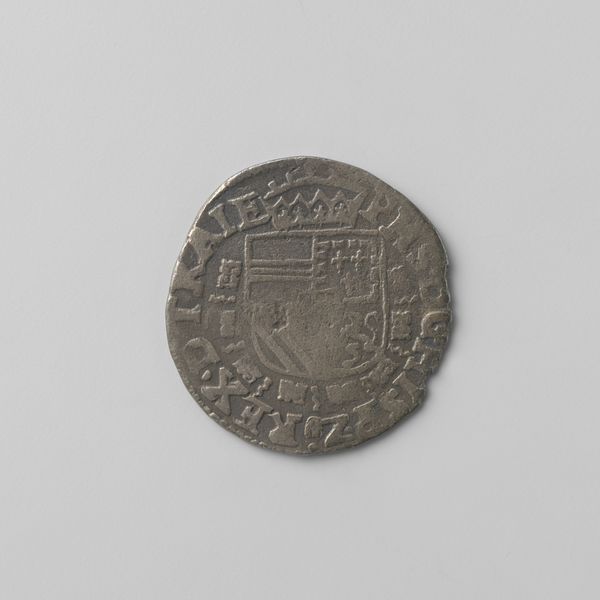
print, metal, embossing, sculpture, engraving
#
portrait
#
medieval
# print
#
metal
#
sculpture
#
embossing
#
geometric
#
sculpture
#
history-painting
#
engraving
Dimensions: diameter 2.8 cm, weight 1.97 gr
Copyright: Rijks Museum: Open Domain
This is a double gosseler coin, made in 1534 by the Three Cities. Fashioned from silver, the gosseler's creation begins with the mining and smelting of the metal. It's then cast or hammered into a blank before being stamped. These processes, though seemingly simple, connect directly to the social and economic circumstances of the time. The coin isn't just money, it's a physical manifestation of early capitalism, and of the labor required to fuel it. Consider the weight of the coin in your hand, the cold feel of the metal, and the imagery impressed upon its surface. Every aspect – from its material to its making – signifies the wider world. It's a reminder that even the most functional objects can reflect profound social and cultural meanings. Coins such as these are examples of how historical and aesthetic interpretations can transcend traditional art boundaries.
Comments
No comments
Be the first to comment and join the conversation on the ultimate creative platform.
